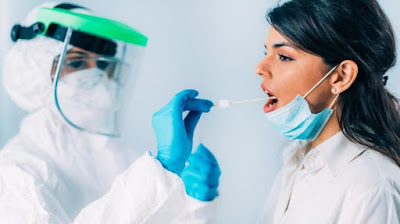Filenews 17 June 2021
A new laboratory protocol that increases diagnostic sensitivity to saliva samples for the detection of SARS-COV-2 coronavirus was recently published in the Journal of Molecular Diagnostics. The innovative protocol gives significant superiority to saliva sampling tests, as this is a process more friendly to the test subject and safer for health workers compared to the collection of nasopharyngeal smear.
"Saliva as a sample for coronavirus control brought great subversion to our battle against the pandemic. It contributed to greater compliance of the population with testing with a lower parallel risk to health personnel during the sampling process," commented lead researcher Ravindra Kolhe, MD, PhD, from the Department of Pathology at Augusta University's Medical College of Georgia.
The new protocol recommends the submission of saliva samples to a droplet homogenizer before the molecular control phase (PCR), thus preventing inaccurate results due to the presence of blood or mucus in the sample, a high probability for these samples.
The research included samples from a hospital, a nursing home and from a test point through the car (drive through).
In the phase I study (protocol U) 24th nasopharyngeal smears and matching saliva samples were tested using a PCR method to detect SARS-CoV-2 RNA. In the Phase II study (SalivaAll), 189 pairs in correspondence, including 85 evaluated in phase I, were homogenised prior to molecular testing. At the same time, an additional survey was being carried out with samples from both phases to determine whether the homogenisation process would affect the sensitivity of nasopharyngeal coatings.
In the final stage, 20 groups with one positive and four negative samples were homogenised prior to molecular testing and compared with the control samples.
The results showed that:
- in phase I (28.3% of SARS-CoV-2 positive samples from each type of test), diagnostic sensitivity was lower for saliva samples (50% vs. 89.7% for nasopharynges)
- in phase II (50.2% of SARS-CoV-2 positive samples from each type of test), diagnostic sensitivity was greater for saliva samples (97.8% vs. 78.9% for nasopharynges)
- of the 85 saliva samples tested with both laboratory protocols, diagnostic sensitivity was 100% for SalivaAll and 36.7% for protocol U.
Dr Kolhe observed that the gel texture in saliva samples specific to gel is probably responsible for their lower sensitivity to PCR controls and the precise channelling of the sample to the specific plates for nucleic acid extraction, as required by the method. The homogenization process solved this problem.
"The need to monitor SARS-CoV-2 will remain a public health priority," Dr Kolhe said, and continued "The use of a non-invasive method of sample collection and an easily accessible sample, such as saliva, will facilitate control and monitoring procedures and bypass the need for sterile cotton swabs, expensive means of transport and the risk of exposure to the virus , even the need for skilled workers to collect samples'.
